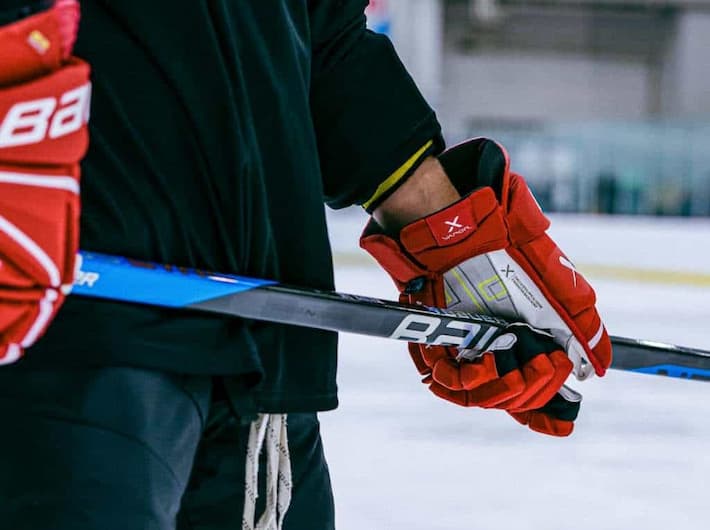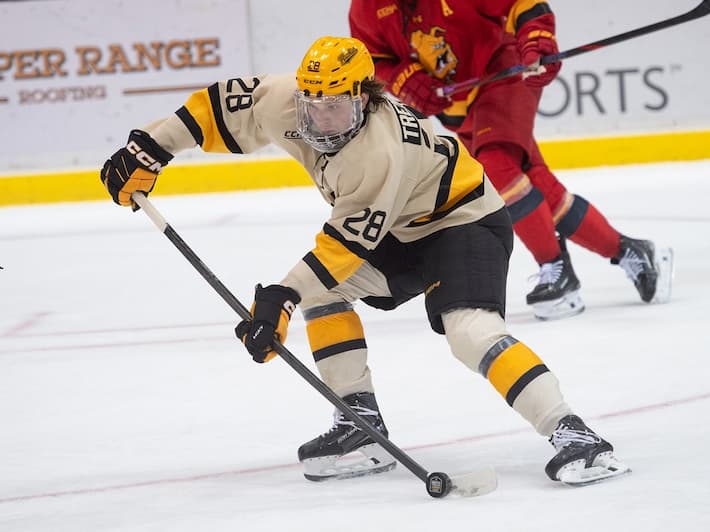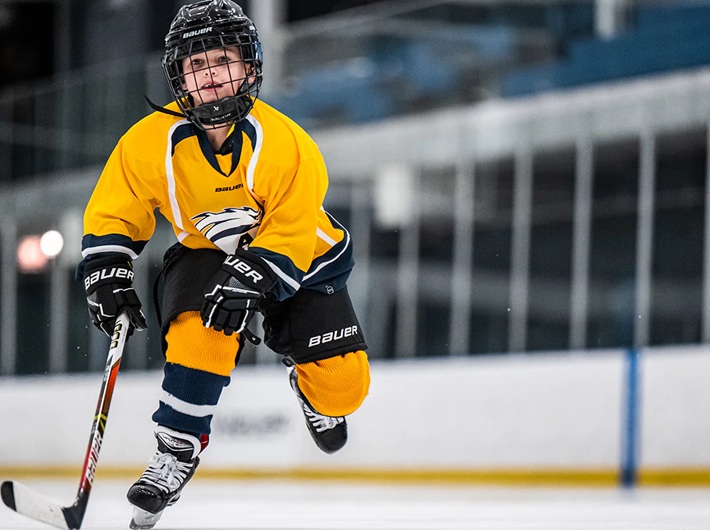In the fast-paced, physical world of ice hockey, protection and control are everything. No piece of equipment balances those two quite like a good pair of hockey gloves. The right gloves protect your hands and wrists from pucks, sticks and ice contact while allowing you to maintain flexibility and precise stick handling. However, glove needs vary greatly depending on a player’s age, skill level and playing intensity. Choosing properly fitted gloves not only improves performance but also prevents discomfort and injuries over time.
Junior Hockey Gloves

The junior hockey gloves are typically for children aged 7–12, or players with smaller hands still developing their stick-handling skills. When choosing youth ice hockey gloves, comfort and flexibility should be top priorities. Young players need lightweight jr hockey gloves that make it easy to grip and manoeuvre the stick without feeling bulky or restricted. Heavy padding can make learning core techniques more difficult, so the key is finding gloves that provide adequate protection without stiffness.
Key Features to Look For
- Lightweight Construction: It reduces fatigue and allows for better hand movement during drills and games.
- Ample Padding: It protects against impacts from pucks and sticks, but should still flex easily.
- Adjustable Cuffs: They give room for growth while ensuring a secure fit.
- Breathable Materials: Mesh or moisture-wicking liners help keep hands cool and dry.
Recommended Fit
The jr hockey gloves should fit snugly but not tightly. The fingers should lightly touch the end of the glove without curling or feeling cramped. To check the fit, have the player grip a stick. If they can move naturally without pressure points, it’s a good match. Always measure from the tip of the middle finger to the start of the elbow pad to determine the right glove size.
Why They Matter
Well-fitted hockey gloves that a junior player wears encourage players to develop proper stick-handling and shooting techniques while staying protected. Early comfort builds confidence and allows kids to focus on skill progression rather than battling ill-fitting gear.
Intermediate Hockey Gloves
Fitting for ages 13–16, or players transitioning from youth leagues to higher competition levels. At this stage, players are skating faster, shooting harder and facing more contact. Gloves in this range need to offer a perfect blend of flexibility, grip and reinforced protection.
Key Features to Look For
- Balanced Design: A middle ground between lightweight mobility and heavy-duty protection.
- Reinforced Palms: Built to withstand stick friction and improve durability during longer practice sessions.
- Moisture-Wicking Liners: These help control sweat and odour for all-day comfort.
Fit Considerations

Intermediate players often benefit from a slightly tighter fit that enhances control without restricting wrist motion. Check wrist flexibility, especially for players who frequently pass or take wrist shots.
Why They Matter
Intermediate gloves serve as the bridge between junior and senior-level designs. They’re durable enough for competitive play but flexible enough for comfort during long ice times. Properly fitted junior ice hockey gloves or intermediate gloves give developing players the confidence to play faster and more aggressively.
Senior Hockey Gloves
Senior gloves are engineered for performance, longevity, and protection, making them perfect for players aged 16 and older, including competitive adults, recreational skaters and professional athletes. At this level, impact resistance, precision fit and premium materials make all the difference.
Key Features to Look For

- High-Density Foam and Plastic Inserts: They offer maximum protection from slashes, pucks, and falls.
- Anatomical or Tapered Fit: Contours naturally to the hand for improved stick control.
- Durable Palms: Often made with Nash leather or synthetic materials for a soft yet strong grip.
- Custom-Fit Options: Some high-end models include adjustable cuffs or internal pads for a tailored fit.
Fit and Feel
Senior players typically prefer a close, contoured fit that enhances feel on the stick. However, ensure there’s enough flexibility in the wrist and fingers to allow smooth handling and shooting. Gloves that are too stiff or loose can reduce precision and increase fatigue.
Why They Matter
At advanced levels, performance and protection go hand in hand. The right senior glove helps maintain control and responsiveness even during the most physical moments. Investing in premium gear pays off through durability, comfort and a consistent feel that can last multiple seasons.
Choosing the Right Fit Across All Levels

Regardless of skill level, a proper glove fit is essential for comfort and performance. Ill-fitting gloves can cause poor circulation, limit movement, or expose vulnerable areas to injury.
Here’s how to ensure the right fit:
- Measure Accurately: Measure from the tip of the middle finger to the start of the elbow pad. Use this length to find your size.
- Comfort vs. Protection: A snug fit ensures better control, but make sure there’s enough padding to absorb impacts.
- Try with Your Stick: Always test gloves while gripping your stick to evaluate real-game mobility.
- Check Ventilation: Quality gloves use breathable liners and mesh panels to prevent sweat buildup and odour.
Comfort, Confidence & Control
Whether you’re shopping for jr hockey gloves for a young beginner or premium senior gloves for a seasoned competitor, choosing the right pair is essential for both safety and skill development. Well-fitting gloves protect against injury, improve grip and help players perform at their best with confidence.
In short, your gloves should feel like an extension of your hands. They should allow you to pass, shoot and block without hesitation. From junior hockey gloves that nurture learning to elite-level designs built for precision and endurance, the perfect pair keeps you focused on what matters most: playing your best game, every time you hit the ice.




